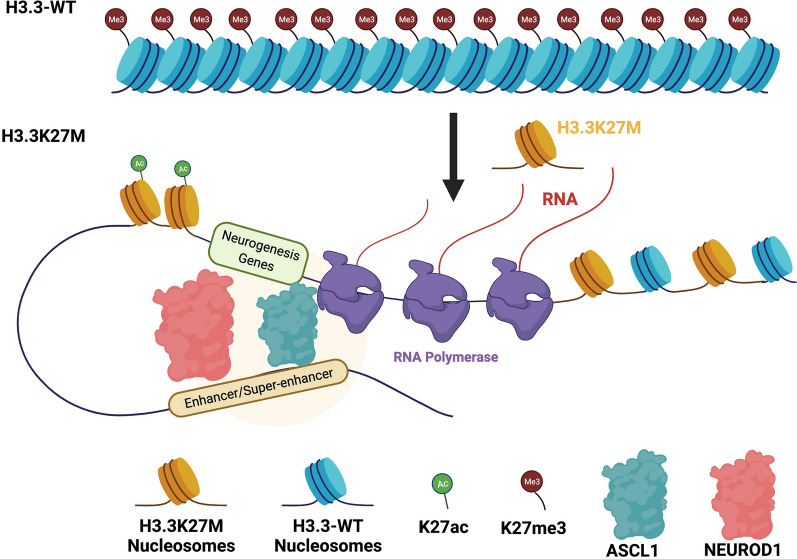Fig. 7.
Model of how H3.3K27M affects the chromatin landscape and subsequent gene expression. In this model, we predict that normal brain cells have H3K27me3 in specific regions throughout the genome resulting in heterochromatin or discrete domains of repressed chromatin and decreased gene expression of specific neuronal, NOTCH signaling, and oncogenesis genes. After the introduction of the point mutation in H3F3A resulting in the H3.3K27M mutation, H3K27me3 levels are decreased and H3K27ac levels increase. The chromatin begins to aberrantly open upon deposition of H3.3K27M–H3K27ac nucleosomes at defined enhancers and super-enhancers responsible for regulating expression of neurogenesis genes. ASCL1 and NEUROD1 transcription factors bind to their respective motifs in these opening regions. We propose that ASCL1 and NEUROD1 binding facilitates enhancer and super-enhancer functions and further opens the chromatin regions ultimately resulting in increased expression of specific neurogenesis, NOTCH, and oncogenesis genes
(Adapted from “Regulation of Transcription in Eukaryotic Cells”, by BioRender.com (2021). Retrieved from https://app.biorender.com/biorender-templates)

